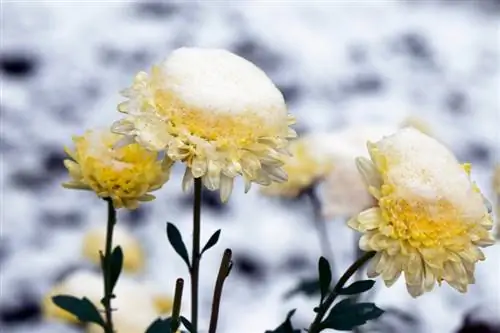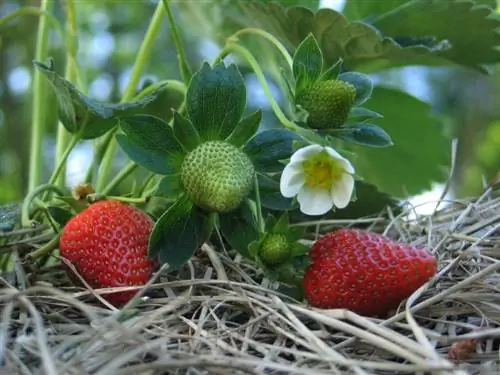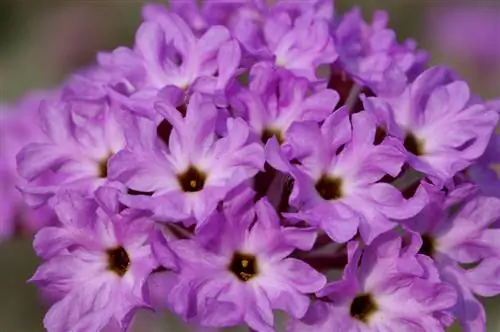- Author admin [email protected].
- Public 2023-12-16 16:46.
- Last modified 2025-01-23 11:20.
Chrysanthemums come in an almost unmanageable variety of colors, shapes and varieties. However, only a few chrysanthemum varieties are actually hardy, as the popular autumn flower originally comes from the warm to tropical climes of East Asia. However, chrysanthemums are almost always perennial, even though they are often only cultivated as annuals in this country. The colorful flowering bushes can be easily overwintered

Are chrysanthemums hardy and perennial?
Hardy chrysanthemums are perennial and survive the cold season outdoors, best protected by brushwood or leaves. Varieties such as Gold Marianne, Little Amber and Red Julchen are considered particularly robust and bloom from late summer to autumn.
Hardy Chrysanthemums
Through targeted breeding, selection and cross-breeding of closely related species - for example the Greenland daisy - winter-hardy chrysanthemum varieties have been created that can usually survive a winter in local areas without any damage. The different varieties of autumn or garden chrysanthemums are almost always hardy, although the rule of thumb for the flower, also known as winter aster, is: the later the flowering period, the better the winter hardiness. Varieties such ashave proven to be particularly robust
- Goldmarianne
- Small Amber
- Red Yule
- Mei-Kyo
- Mist Rose
- Vreneli
- Order Star
- or the salmon red cloud
proven. The old variety “Ordensstern”, which presents its beautiful, gold-bronze, double flowers from August to November, has one of the longest flowering times.
Overwintering chrysanthemums
Hardy chrysanthemums are best overwintered outdoors, although they should be mulched with brushwood, leaves or clippings to protect against the cold. In very harsh winters, you can also cover the plant with a protective fleece. Non-hardy varieties, on the other hand, as well as chrysanthemums grown in pots, belong in the house or greenhouse in winter, ideally at temperatures between five and ten degrees Celsius. However, it doesn't necessarily have to be bright, at least not if you have previously cut the withered and dried shoots back to just above the ground.
Tip
Try something completely new and cultivate edible chrysanthemums. Their tender young shoots as well as the leaves and flowers are edible and can be prepared in a variety of ways.






